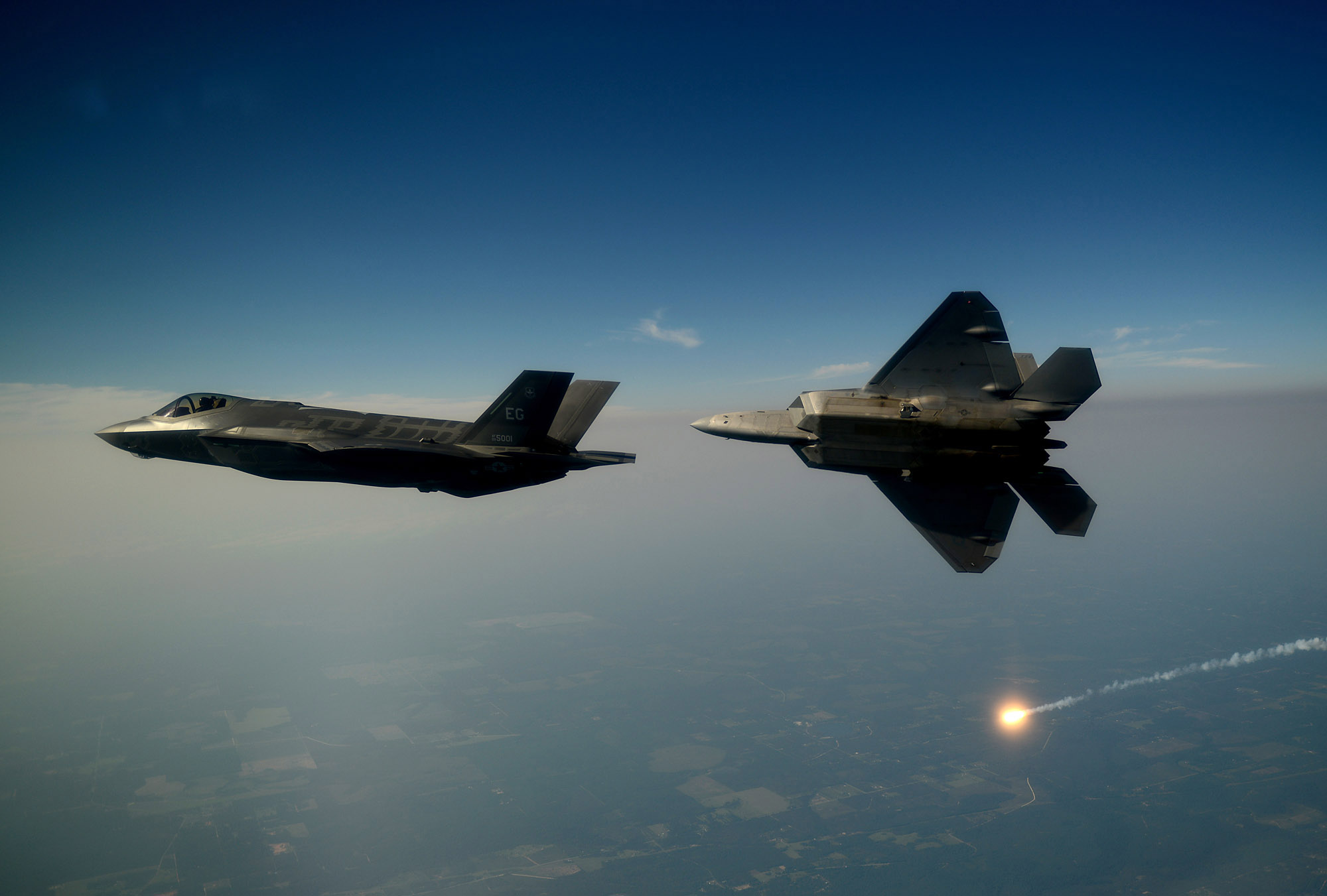
An F-35A Lightning II strike fighter from the 33rd Fighter Wing at Eglin AFB, Fla., and an F-22A Raptor from the 43rd Fighter Squadron at Tyndall AFB, Fla., soar over the Emerald Coast on Sept. 19, 2012. Air Force photo by MSgt. Jeremy T. Lock.
Nov. 18, 2015: Partnered with the Air Force, Lockheed Martin is looking to add Open Mission Systems capability to the F-22 and F-35 in the coming five to 10 years, according to F-35 Program Manager Jeff Babione.
The Pentagon wants OMS so it can rapidly insert new capabilities and compete system upgrades. One key capability likely requiring OMS is the ability for stealthy fifth generation jets, like the F-22 and F-35, to be able to communicate with fourth generation aircraft and other platforms.
Speaking with Air Force Magazine Tuesday, Babione said the current plan calls for the F-22 to have an OMS capability—allowing new sensors, processors, and software to be hosted on the jet without an elaborate hardware change-out, and without cutting into the jet’s low observable surfaces—“in the early ‘20s.” However, the company thinks it can “pull that back” by two or three years.
On its own dime, Lockheed demonstrated a stealthy version of Link 16 capability using OMS on the F-22 in 2013. It’s an improvement “we could install … in a number of weeks,” but so far, Air Combat Command hasn’t chosen to buy the capability, Babione said. However, the demonstration “showed them the art of the possible” and will likely become part of the next round of F-22 upgrades, called Tactical Mandates, he said.
On the F-35, an open system could be available “by the early ‘20s,” Babione noted, adding “it takes about four to five years to get everything right.”
Also in the works is the Future Airborne Capability Environment (FACE), which will require the F-35 to communicate not only with other Air Force systems, but Navy jets, ships, and “subsurface, as well.”
The “first elements” of F-35 OMS will be developed in conjunction with the so-called Block 4 round of F-35 upgrades, which will concurrently add new capabilities.
Lockheed is competing an interface among six companies, and will downselect to three before choosing one to organize the system, Babione noted. The F-35 System Program Office will be involved in the choice and, “We’ll know in a year or so” what the conversion timetable will be, he said.
“One enables the other,” he added, referring to the upgrades and the OMS architecture.
The OMS push should be viewed as “laying the foundation” for further block upgrades, he said, explaining “this is a 50-year airplane” that will have to keep up with rapid technology turnover.
Lockheed Martin is part of the Boeing team not selected for the Long-Range Strike Bomber, and which has protested that award to Northrop Grumman. Capability with designing and integrating OMS architectures was considered a discriminator in that competition.